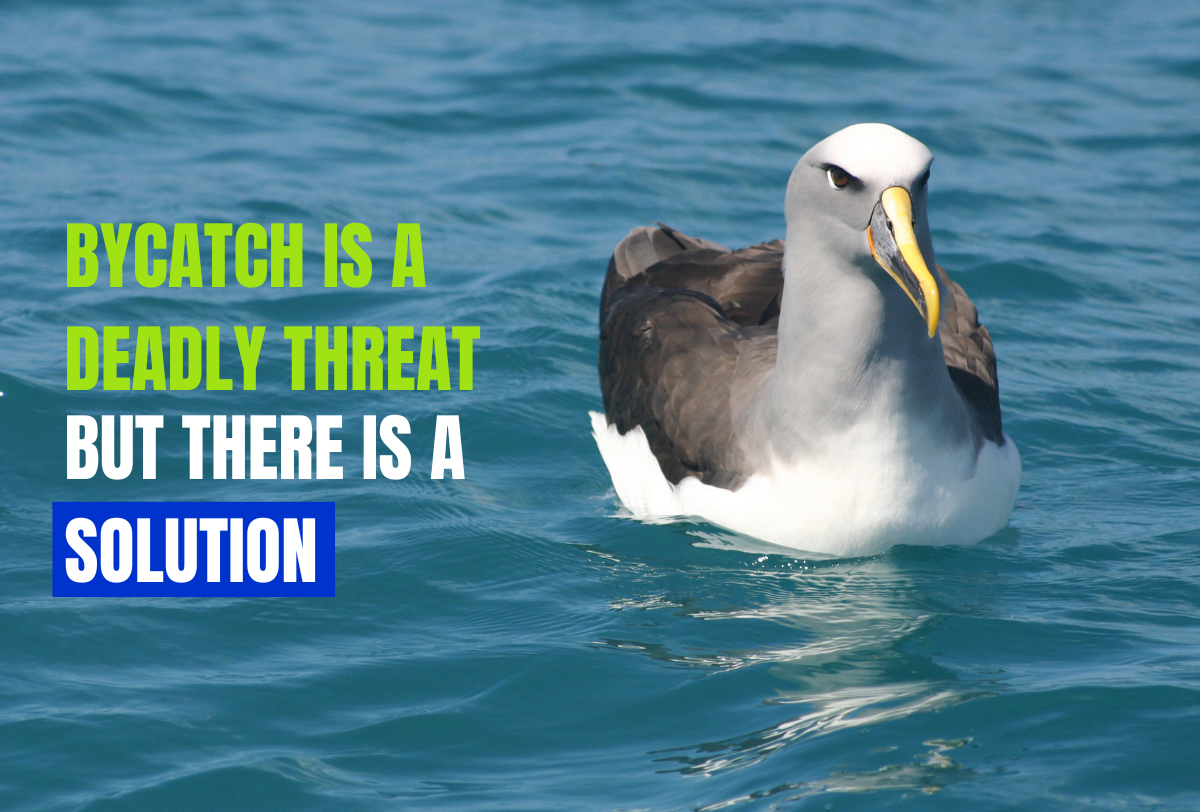
Can we answer the questions eating at aquafeed?
Is aquaculture sustainable? As with so many important questions, the inevitable—often infuriating—answer is, “it depends.”
As the U.S. looks to expand into open ocean aquaculture (usually between 3 and 200 nautical miles off the coast), we have the opportunity to get things right from the start. We can create diverse local jobs, build a more climate-resilient domestic seafood supply, and, of course, minimize impacts on the climate and environment. We know that aquaculture can already be more sustainable than other forms of food production. But, we can make it even better by focusing on what remains unknown.
EDF is diving deep into those questions for the nascent U.S. offshore aquaculture industry. Based on a comprehensive scientific study of risks and knowledge gaps and priorities from our partners, the white papers tackle the biggest drivers of aquaculture’s environmental impact, and assemble the established best practices to avoid, minimize, and address risks.
First, we look at aquaculture feeds, examining advancements in efficiency, novel ingredients that relieve the dilemma of catching wild fish to feed farmed fish, and interventions to help innovations scale. Next, we’ll cover the risks of fish escaping aquaculture pens and the best practices to prevent, minimize, and respond to escapes. Then, we discuss how to minimize the risk of disease spreading within farms and to wild populations. Finally, we survey how technology is de-risking aquaculture from a sustainability standpoint, how much further we could get by accelerating those trends, and where established practices, not new inventions, might be the way forward.
Sustainable considerations for U.S. open ocean aquaculture feed
Sustainable aquaculture requires sustainable feed, which accounts for up to 90% of the environmental impacts of aquaculture. Innovations in feed ingredients have helped make strides toward sustainability. Of course, this is good news, but there is still room for improvement. For example, high capital costs and an uncertain regulatory landscape are slowing urgently needed innovation.
In our white paper, “Sustainability Considerations for the Expansion of US Open Ocean Aquaculture: Aquaculture Feed,” we look at existing practices, new technologies, and opportunities for advancement that can help the feed industry reduce aquaculture’s environmental footprint while creating new economic opportunities in rural and coastal areas. We’ll break down our findings here.
Sustainability trends and developments in traditional aquaculture feed
Aquaculture feed sustainability has improved significantly over the past 30 years due to increased efficiency, alternative ingredients, and use of food waste and by-products. Here is what has changed:
- Sustainability is the standard. The industry is developing feed standards as a component of voluntary sustainability certifications. Today 90% of U.S. seafood retailers have made sustainability commitments.
- Waste not, want not. Aquaculture feeds increasingly incorporate waste from other food systems such as crop residues and animal by-products, improving environmental and economic performance. In 2022, 38% of fishmeal and fish oil came from seafood processing waste.
- Aquafeed is less fishy. Plant-based proteins and oils from crops, such as soy and wheat, now dominate aquaculture feed diets and could provide up to 75% of feed protein. Fishmeal went from constituting 19% of total aquaculture feed in 2000 to 9% in 2020.
Advancements in novel aquaculture feed ingredients
What exactly are these plant-based proteins and oils that are taking the place of fish meal and fish oil? What makes them ideal for aquafeed? Traditionally, aquaculture feed for marine finfish relied on fish meal and fish oil from wild-caught forage fisheries. But that’s changing. Advancements in feed efficiency and incorporation of plant-based proteins and agricultural by-products have reduced dependence on marine fisheries. There are several ingredients driving these advancements, and each have benefits to aquafeed.
- Microalgae. Oils from microalgae, a good source of omega-3s, probiotics, and immune support, hold the highest potential to replace fish oil. Studies show that replacing 100% of fish oil with marine microalgal strains could improve feed efficiency and growth performance.
- Insects. Insects like the black soldier fly and mealworms are considered a safe, viable addition to aquaculture feeds that improves the quality of fish protein produced. Insect farming requires less land, water, and time than growing conventional ingredients.
- Genetically modified canola oils. These oils have equivalent levels of omega-3s to fish oils. They have been determined safe for fish and humans and have been approved for aquaculture feeds in the U.S., Canada, and Australia.
- Single Cell Proteins. Proteins from bacteria, yeast, and fungi complement plant-based feeds to provide complete nutrition. As additives, they improve fish gut health and immune function.
These ingredients aren’t perfect though. Because novel ingredients are still produced in small, unique batches, they face high capital and operating costs and cannot yet provide sufficient and consistent supply and quality to meet demand.
Additionally, incorporating novel terrestrial ingredients means that transparency and sustainability targets are needed throughout the supply chain to ensure all ingredients are responsibly sourced. In the US, unpredictable review processes and policies that exclude these novel ingredients from agricultural regulation and funding opportunities slow innovation.
Improvements in feed conversion efficiency
Aquaculture is already far more efficient than terrestrial agriculture: farmed fish are twice as efficient at converting feed into body weight than pigs, and six times more efficient than sheep. With new ingredients and precision technologies including artificial intelligence, aquaculture feed is becoming even more efficient while optimizing nutrition.
For example, rainbow trout require half the feed today compared to the 1980s due to advancements in selective breeding. Overall, dependence on marine forage fish in feed has gone down by over 70% since 2000, and feed conversion efficiency for finfish aquaculture has improved by 35%.
Opportunities for a bright future for sustainable aquaculture feed
Consumers are increasingly concerned about food sustainability, and the aquaculture feed industry is embracing innovative ingredients and efficient approaches. With additional research, bringing innovations to scale, and comprehensive legislation, we can promote food security while reducing the aquaculture feed resource footprint in the U.S. and globally.
Opportunities for Congress to promote sustainable aquaculture feed include:
- Pass comprehensive science-based legislation to harmonize and codify standards for responsible sourcing of feed ingredients throughout the supply chain, including a consistent methodology to measure sustainability and streamlined approvals for safe novel ingredients.
- Require the prioritization of feed ingredients that avoid human food conflicts in all the above efforts.
- Support funding for early-stage innovation to accelerate sustainability progress, and partnerships and education to promote adoption of technologies.
- Authorize programs that establish global sourcing transparency, including consistent measurements of targets.
Synthesizing our existing progress and identifying where we need to do better (as we’ve done in our white paper) means that we have the tools to ensure this food system is sustainable. The future sustainability of our food system depends on it.












